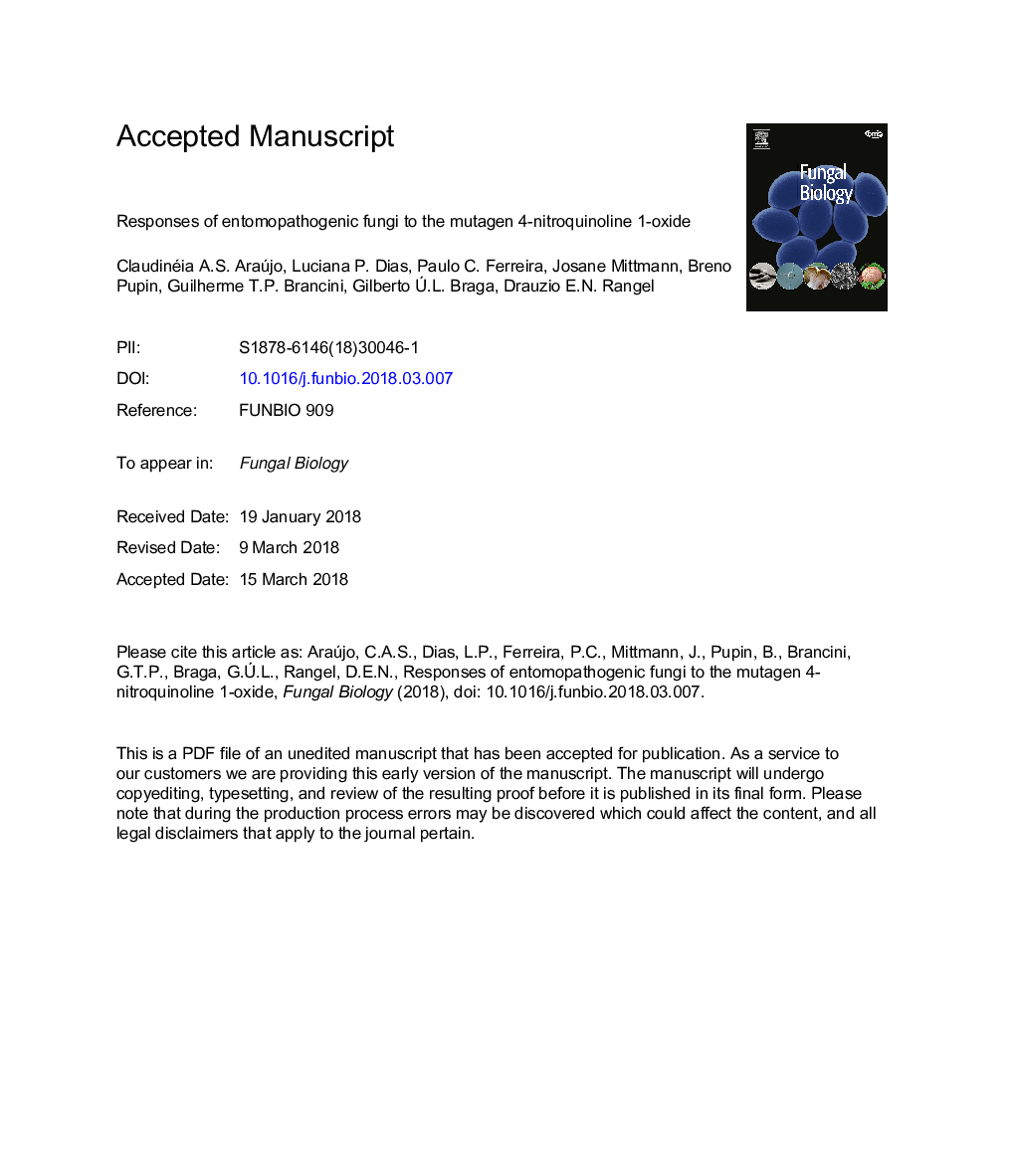| کد مقاله | کد نشریه | سال انتشار | مقاله انگلیسی | نسخه تمام متن |
|---|---|---|---|---|
| 8842758 | 1615831 | 2018 | 26 صفحه PDF | دانلود رایگان |
عنوان انگلیسی مقاله ISI
Responses of entomopathogenic fungi to the mutagen 4-nitroquinoline 1-oxide
ترجمه فارسی عنوان
پاسخ قارچ های اندوموپاتوژن به موتاژن 4-نیوتو کینولین 1-اکسید
دانلود مقاله + سفارش ترجمه
دانلود مقاله ISI انگلیسی
رایگان برای ایرانیان
کلمات کلیدی
موضوعات مرتبط
علوم زیستی و بیوفناوری
علوم کشاورزی و بیولوژیک
علوم کشاورزی و بیولوژیک (عمومی)
چکیده انگلیسی
Survival of entomopathogenic fungi under solar ultraviolet (UV) radiation is paramount to the success of biological control of insect pests and disease vectors. The mutagenic compound 4-nitroquinoline 1-oxide (4-NQO) is often used to mimic the biological effects of UV radiation on organisms. Therefore, we asked whether tolerance to 4-NQO could predict tolerance to UV radiation in thirty isolates of entomopathogenic fungi and one isolate of a xerophilic fungus. A dendrogram obtained from cluster analyses based on the 50 and 90 % inhibitory concentrations (IC50 and IC90, respectively) divided the fungal isolates into six clusters numbered consecutively based on their tolerance to 4-NQO. Cluster 6 contained species with highest tolerance to 4-NQO (IC50 > 4.7 μM), including Mariannaea pruinosa, Lecanicillium aphanocladii, and Torrubiella homopterorum. Cluster 1 contained species least tolerant to 4-NQO (IC50 < 0.2 μM), such as Metarhizium acridum (ARSEF 324), Tolypocladium geodes, and Metarhizium brunneum (ARSEF 7711). With few exceptions, the majority of Metarhizium species showed moderate to low tolerances (IC50 between 0.4 and 0.9 μM) and were placed in cluster 2. Cluster 3 included species with moderate tolerance (IC50 between 1.0 and 1.2 μM). In cluster 4 were species with moderate to high tolerance (IC50 between 1.3 and 1.6 μM). Cluster 5 contained the species with high tolerance (IC50 between 1.9 and 4.0 μM). The most UV tolerant isolate of M. acridum, ARSEF 324, was the least tolerant to 4-NQO. Also, L. aphanocladii, which is very susceptible to UV radiation, showed high tolerance to 4-NQO. Our results indicate that tolerance to 4-NQO does not correlate with tolerance to UV radiation. Therefore this chemical compound is not a predictor of UV tolerance in entomopathogenic fungi.
ناشر
Database: Elsevier - ScienceDirect (ساینس دایرکت)
Journal: Fungal Biology - Volume 122, Issue 6, June 2018, Pages 621-628
Journal: Fungal Biology - Volume 122, Issue 6, June 2018, Pages 621-628
نویسندگان
Claudinéia A.S. Araújo, Luciana P. Dias, Paulo C. Ferreira, Josane Mittmann, Breno Pupin, Guilherme.T.P. Brancini, Gilberto Ã.L. Braga, Drauzio E.N. Rangel,
